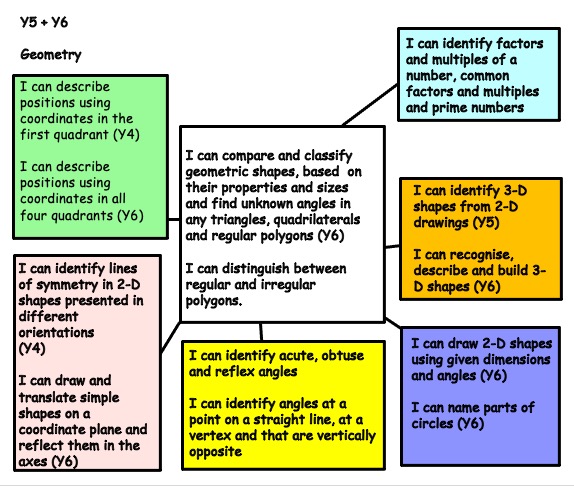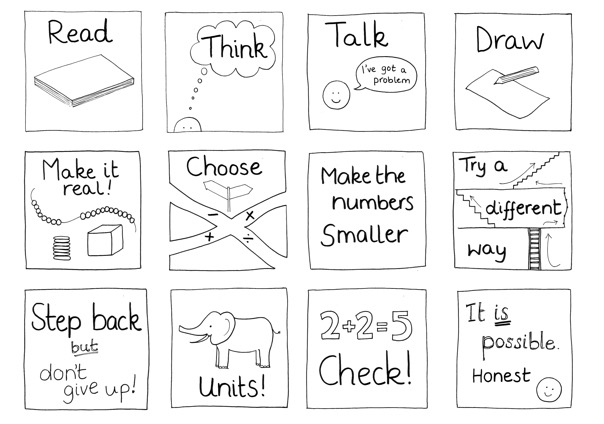Maths Fluency - Problem Solving - Reasoning
Curriculum
We organise mathematical learning into projects, grouping aspects of learning that can be taught well together. For example, we teach addition and subtraction alongside measurement, giving opportunity for pupils to apply their calculation skills in a real life context. In most classes, to varying degrees, pupils learn concepts twice in two cycles of study. In the first cycle we cover most of the curriculum, leaving a few areas of learning for the second cycle when we also revisit objectives that proved challenging earlier in the year and extend, broaden and deepen understanding.
We use spider diagrams like the one below to share the planned learning with pupils, helping them to make connections and understand how learning fits together. Pupils also use the diagram to record their progress through each unit of work.

Example spider diagram
Planning
The projects for each class are detailed in our Maths Long Term Plan.
We have previously worked closely with the local authority and the Archimedes Maths Hub to develop mixed aged planning documents that support our teachers and those from other schools. They are available to download here.
Times Tables
Fast recall of times tables knowledge is crucial to fluency in maths and makes some aspects of the subject, such as fractions, much easier to grasp. We invest plenty of curriculum time learning times tables in a progressive way through school and ask that from Year 2, pupils practise times tables regularly at home too. In KS1 pupils learn the 2, 5 and 10 times tables. We introduce the 3, 4, 5 and 8 times tables from Year 2 and by Year 4 pupils need to know all facts up to 12 x 12.
Calculation Methods
We have a consistent approach to the use of written calculation methods which is designed to give children accurate and efficient methods with which to tackle more complex problems. A display of age appropriate calculation methods is available in every classroom and is available to parents as a Calculation Policy.
Mental Maths and Target Sheets
Good knowledge of some key number facts and the ability to access this information quickly makes a huge difference to pupils' ability to tackle more challenging problems. We use mental maths knowledge in every lesson and also set maths targets to work on with a follow up assessment every couple of weeks. Each pupil has a maths target sheet, linked to their current level of learning, in their home-school link book. Additional copies of the maths target sheets are available to download/print by clicking on the links below.
Problem Solving
Problem solving and reasoning is at the heart of mathematical learning. We build problem solving into lessons whenever possible, though the way we present a task or question, in real life situations and through traditional word problems. We always encourage pupils to view problems as a puzzle and a project that they are 'working on' rather than stuck with. Pupils are able to access a display of problem solving strategies in every classroom.

For further information about Mathematics, please contact our subject leaders, Gordon Stainsby and Rachel Allison.





